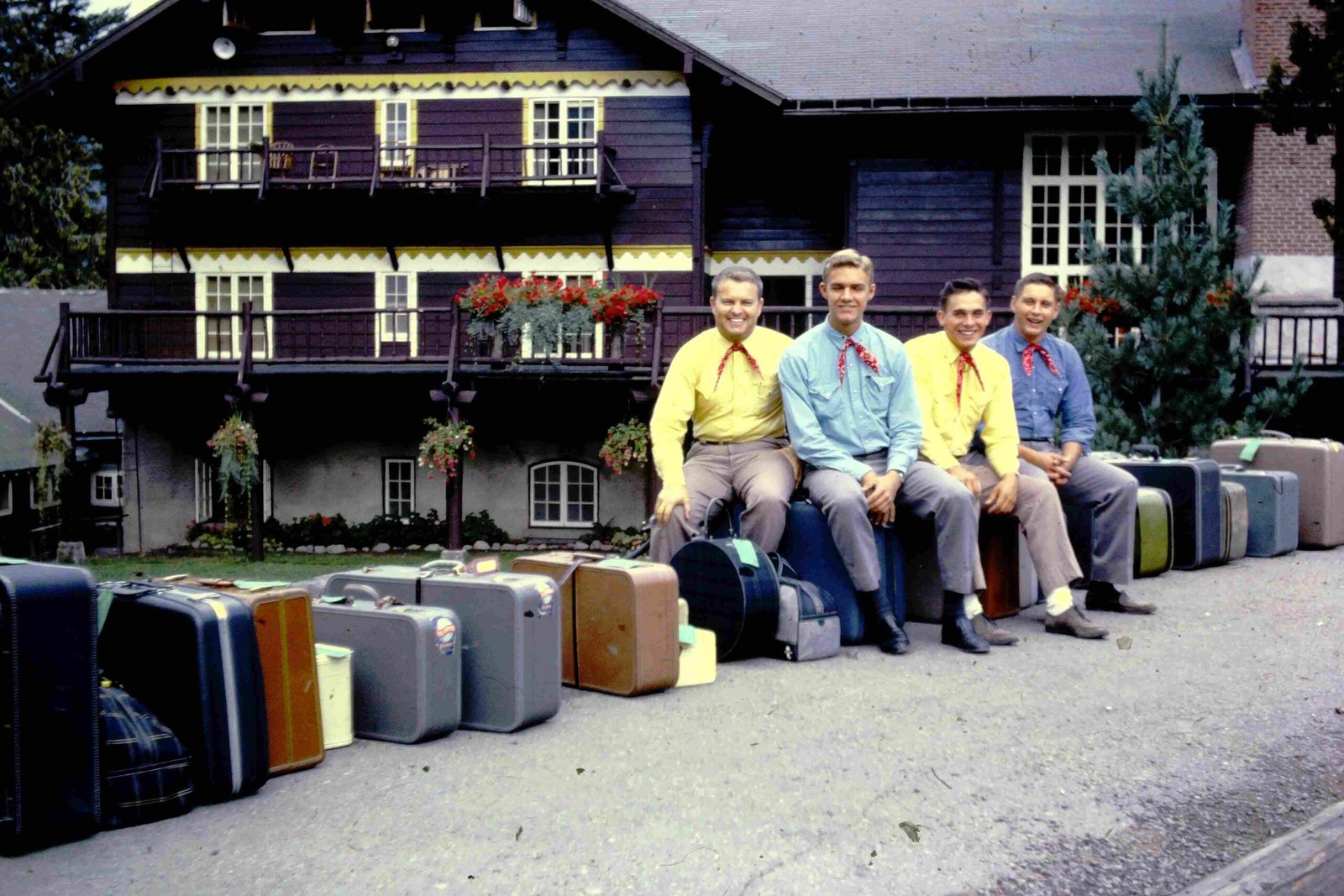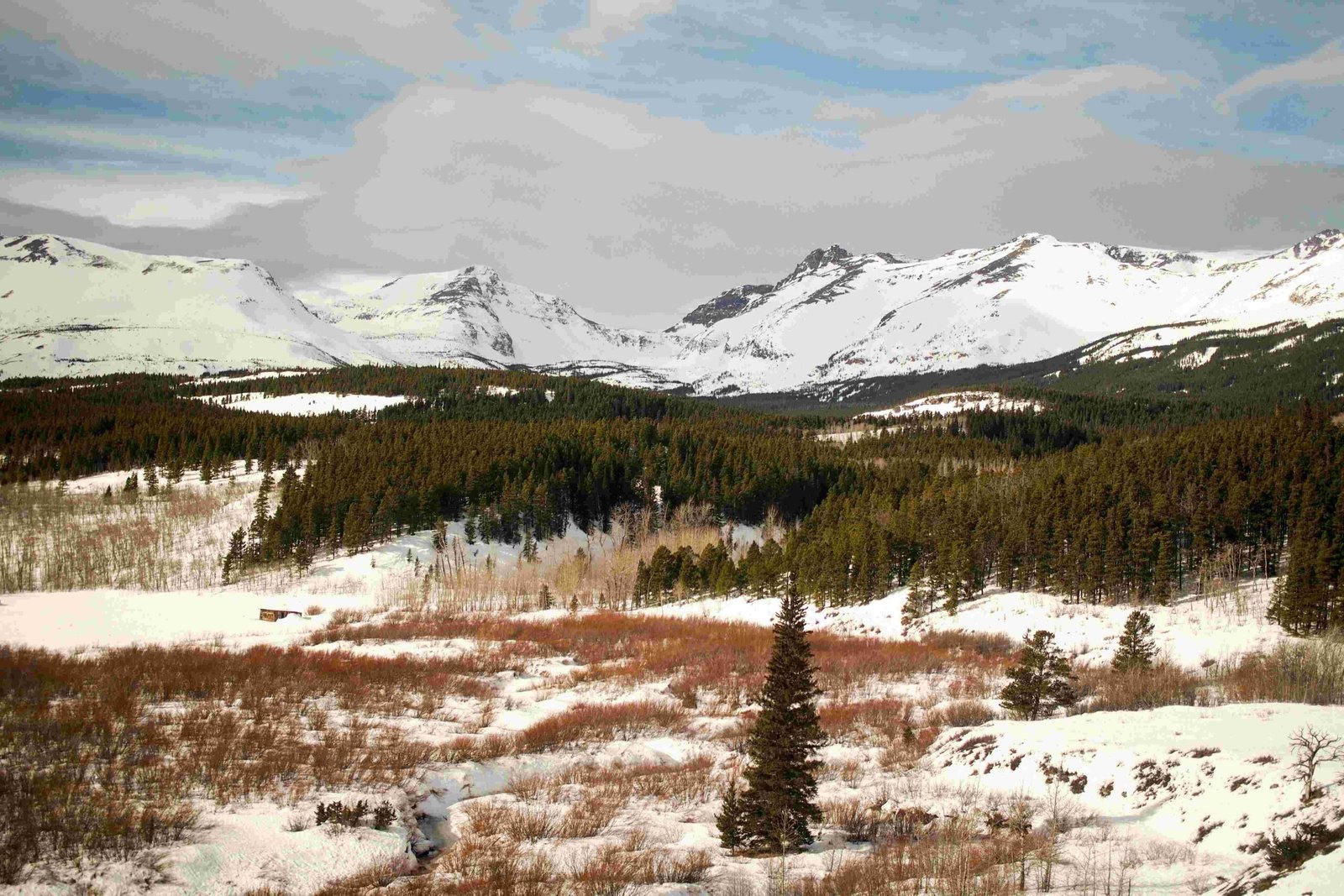Glacier National Park mule deer are adaptable creatures that inhabit diverse ecosystems within the park. These resilient animals navigate through forests, meadows, and alpine areas, showcasing remarkable survival skills. Mule deer in Glacier National Park exhibit unique behaviors, including seasonal migrations and selective feeding habits. Their presence contributes to the park’s biodiversity and offers visitors opportunities for wildlife observation and appreciation of nature’s intricacies.
What are the Preferred Habitats of Mule Deer in Glacier National Park?

Mule deer in Glacier National Park demonstrate remarkable adaptability to various habitats:
- Vegetation Types:
- Meadows rich in forbs (flowering, herbaceous plants)
- Forests with abundant leaves and twigs of woody plants
- Lakeshores offering diverse vegetation
-
Areas with skunkbush sumac and Rocky Mountain juniper
-
Elevation Ranges:
- Summer: Higher elevations, including alpine meadows and forests
-
Winter: Lower elevations with less snow and more accessible forage
-
Seasonal Preferences:
- Summer: Distributed throughout the park, including higher elevations
- Winter: Concentrated in lower elevation valleys and north entrance areas
- Avoid deep snow areas
- Seek patches with greater solar radiation and canopy cover
This habitat flexibility allows mule deer to thrive in Glacier National Park’s diverse landscapes, adapting to seasonal changes and resource availability.
How Do Mule Deer Behave in Glacier National Park?

Mule deer in Glacier National Park exhibit fascinating behaviors that contribute to their survival:
- Feeding Habits:
- Selective feeders due to small stomachs
- Prefer high-quality, nutritious plants
-
Focus on forbs, leaves, twigs, and mast
-
Social Structures:
- Form multigenerational family groups of related females
- Older bucks often travel independently or in small male groups
-
Late summer: Mixed family groups may combine into larger herds
-
Daily Activity Patterns:
- Most active during early morning and late afternoon
- Time spent grazing, resting, and avoiding predators
-
Use hearing, smell, and sight to detect threats
-
Behavioral Adaptations:
- Avoid deep snow areas
- Seek solar radiation and canopy cover in winter
- Browse on various plants to exploit different habitats
These behaviors showcase the mule deer’s ability to adapt to Glacier National Park’s challenging environment and changing seasons.
What Distinguishes Mule Deer from White-Tailed Deer in Glacier National Park?
Mule deer and white-tailed deer in Glacier National Park have distinct characteristics:
| Feature | Mule Deer | White-Tailed Deer |
|---|---|---|
| Physical Appearance | – Black-brown forehead – Grayish face – White rump patch – Slim white tail with black tip – Large, mule-like ears |
– Reddish-brown coat – White hair on throat, near nose and eyes – White stomach – White underside of tail |
| Habitat Preferences | – Found throughout the park – Adapt to various habitats – Utilize higher elevation areas |
– Scarce in the park – Primarily in riparian habitats – Found along streams |
| Behavioral Traits | – Graze in meadows, forests, and lakeshores – Exhibit partial migration behavior |
– Stay in confined, riparian areas – Less migratory behavior |
These differences highlight the unique adaptations of mule deer to Glacier National Park’s diverse ecosystems compared to their white-tailed counterparts.
What are the Migration Patterns of Mule Deer in Glacier National Park?
Mule deer in Glacier National Park exhibit distinct migration patterns:
- Timing:
- Spring migrations: Average initiation dates of May 7-20
-
Fall migrations: Late fall, with varying individual timing
-
Routes:
- Summer: Move to higher elevation areas within the park
-
Fall: Migrate to lower elevation areas, including north entrance and valleys
-
Influencing Factors:
- Forage availability
- Snow depth
-
Predation risk
-
Environmental Adaptations:
- Avoid deep snow areas
- Seek patches with greater solar radiation and canopy cover
- Balance between snow avoidance and canopy cover crucial for winter survival
These migration patterns demonstrate the mule deer’s ability to adapt to Glacier National Park’s seasonal changes and optimize their survival strategies.
How Do Environmental Conditions Affect Mule Deer Populations in Glacier National Park?
Environmental conditions play a crucial role in shaping mule deer populations in Glacier National Park:
- Severe Winters:
- Can lead to population declines
- Increased winter kill rates
-
Higher predation risk
-
Distribution Patterns:
- Relative distribution across winter range remains similar over decades
-
Population exhibits cyclical increases and decreases
-
Habitat Changes:
- Alterations in vegetation due to climate change may impact forage availability
-
Shifts in snow patterns can affect winter habitat suitability
-
Predator-Prey Dynamics:
- Presence of predators like wolves and mountain lions influences population
- Predation pressure may vary seasonally and spatially within the park
Understanding these environmental influences is crucial for effective management and conservation of mule deer populations in Glacier National Park.
What Conservation Efforts Support Mule Deer in Glacier National Park?
Glacier National Park implements various conservation strategies to support mule deer populations:
- Habitat Protection:
- Preserving diverse ecosystems within the park
-
Maintaining natural vegetation communities
-
Monitoring Programs:
- Regular population surveys
-
Tracking migration patterns and habitat use
-
Research Initiatives:
- Studying impacts of climate change on mule deer
-
Investigating predator-prey relationships
-
Visitor Education:
- Informing park visitors about mule deer behavior and habitat needs
-
Promoting responsible wildlife viewing practices
-
Collaborative Management:
- Working with surrounding land managers to ensure habitat connectivity
- Coordinating with wildlife agencies for regional conservation efforts
These conservation efforts aim to ensure the long-term survival and health of mule deer populations in Glacier National Park.
How Can Visitors Responsibly Observe Mule Deer in Glacier National Park?
Visitors to Glacier National Park can responsibly observe mule deer by following these guidelines:
- Maintain Distance:
- Stay at least 25 yards (23 meters) away from mule deer
-
Use binoculars or telephoto lenses for close-up views
-
Respect Wildlife:
- Do not feed or approach mule deer
-
Avoid disturbing their natural behaviors
-
Follow Park Rules:
- Adhere to designated trails and viewing areas
-
Obey all wildlife-related regulations
-
Timing Considerations:
- Best viewing times: Early morning and late afternoon
-
Be aware of seasonal changes in mule deer behavior and distribution
-
Educate Yourself:
- Learn about mule deer ecology and behavior
-
Attend ranger-led programs for expert insights
-
Report Observations:
- Share significant sightings with park staff
- Contribute to citizen science projects when available
By following these guidelines, visitors can enjoy observing mule deer while minimizing their impact on these magnificent animals and their habitat in Glacier National Park.
References:
1. Montana Statewide Mule Deer Study
2. Mule Deer (U.S. National Park Service)
3. Mule Deer – Yellowstone National Park